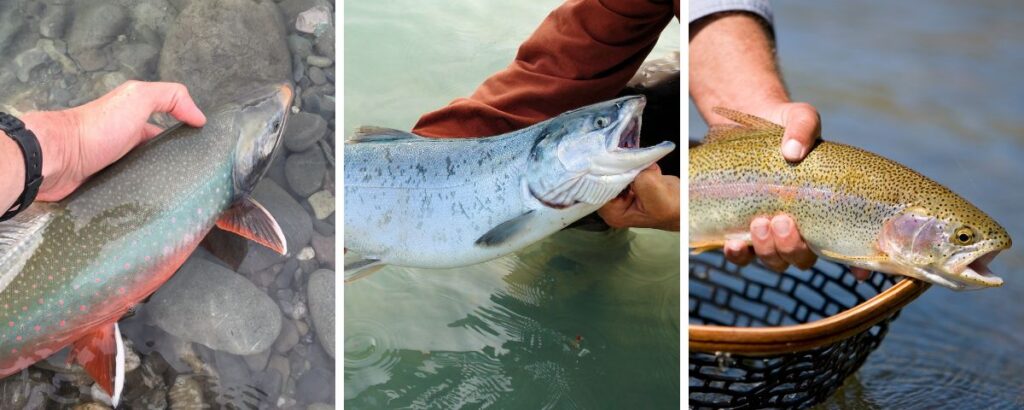What makes Arctic char unique?
Arctic char is part of the Salmonid family, but what sets it apart from its popular cousins; salmon and trout? Arctic Char hails from the icy, pristine waters of the Arctic region. The cold, pure environment contributes to its distinctive flavor profile.
- Arctic Char: Primarily inhabit the cold, freshwater lakes and rivers of the Arctic and subarctic regions.
- Salmon: Found in both the Atlantic and Pacific oceans, depending on the species. Spawn in freshwater and migrate to the ocean.
- Trout: Diverse species found in freshwater bodies like rivers and lakes, with some also living in the ocean.
CULINARY DIFFERENCES
Arctic Char boasts a refined, delicate taste that distinguishes it from the robust flavor of salmon. It strikes a harmonious balance between the richness of salmon and the subtlety of trout. The delicate texture is a perfect marriage of a firm, flaky structure akin to trout and the melt-in-your-mouth succulence reminiscent of salmon. The Arctic char skin is delicate, but crisps beautiful, and contains Vitamin D.
Arctic char, salmon and trout are categorised as fatty fish, but the layering of the fat differs. The fat content of Arctic char is close to that of sockeye salmon and provides a lot of omega-3 fatty acids and carotenoids. Salmon is generally higher in fat. This makes Arctic char an excellent choice when looking for a milder fish option.
Color of Flesh:
- Salmon: Ranges from pink to orange, influenced by diet and environment.
- Arctic Char: Varies from pale pink to deep red, influenced by diet and habitat.
- Trout: Light pink to orange, influenced by diet.
In summary:
- Salmon: Rich, robust flavor with varying intensity depending on the species with a firm and flaky texture.
- Arctic Char: Delicate, refined taste with a subtle balance between salmon and trout flavors, and less fat. A blend of firmness and melt-in-your-mouth succulence.
- Trout: Mild, delicate flavor with a slightly nutty undertone. Delicate, tender, and flaky.

THE FISH and FARMING METHOD
Salmon is known for its dark brown and green spots, trout has quite dark speckles and Arctic char has light pink, white, or red speckles depending on the season.
Matorka's Arctic char are farmed on land. Land-based aquaculture ensures responsible farming practices that minimize environmental impact. Our farm uses 100% green geothermal electricity, and natural water from snowmelt and precipitation which makes land-based farmed Arctic char from Iceland lower in carbon emissions compared to most other farmed salmonid species.
Unlike Pacific salmon, Char do not die after spawning. They often spawn several times throughout their lives. As for the colouring? Char has been shown to change colors in different environments and life stages. You may know that (like salmon) they change color when maturing or spawning, BUT wild Arctic char have such diversity when it comes to feeding habits that their body shape and coloration can vary in accordance to their niche.
One last fun fact about this extraordinary fish; Arctic char return to their river of origin every year and spend the winter there whether they spawn or not. They cannot survive the winter living in saltwater.

Explore the culinary versatility of Arctic Char. Its mild flavor allows for diverse cooking methods, from grilling and smoking to poaching, providing a canvas for gastronomic creativity.